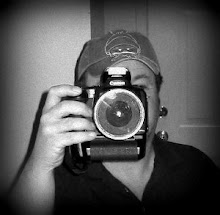You’ll pay for that “great” deal… eventually: "READ THIS- before buying any camera on the internet!
You’ll pay for that “great” deal… eventually.
Almost all of the “amazing deals” found on the internet are gray market products. These are products that are made by a popular, reputable manufacturer, and intended for and shipped to a foreign market. They are purchased by a dealer that accepts gray market products, and then resold in the US, usually at a discount. While it may seem like a bargain to buy the “same” name brand at a lower cost, the risks and headaches that come with it usually far outweigh the few dollars saved, and you could end up with a camera you can’t even use.
Warranty? What warranty?
Aside from manuals and menus that may not be in a language you even recognize, and cords that won’t plug in to American systems without some adapter, these purchases maintain one overriding risk. They do not come with a US warranty from the manufacturer. This means that if something, anything, goes wrong with that camera, you may be completely out of luck. In fact, some manufacturers will not service gray market cameras in the US at all, even if you are willing to pay for it yourself. So if you want to get that camera fixed, it may require shipping it to a foreign country and hoping for the best. To learn more about the problems of gray market products click here for FAQ’s.
How can I spot Gray Market deals?
* US Manufacturer’s Warranty- This is the first tip off. If the product advertised does not come with its manufacturer’s US warranty (make sure it actually says it’s both a US warranty and a manufacturer’s warranty), chances are you are getting gray market.
* Authorized Dealer- If the site is not an authorized dealer for that brand, you don’t know what you are getting. Authorized dealers usually stay away from gray market products, as this tends to hurt the manufacturer, jeopardize the camera retailer’s dealership, and most importantly, hurts the consumer.
* Fine print- Many websites will attempt to cover themselves by burying details about the nature of their products in the fine print descriptions. Any site that mentions “May be missing original packaging, cables, manuals etc.” should be avoided, unless you want to risk buying an incomplete camera.
* Ask- Not many people bother to ask about gray market products. If you see a deal that seems “too good to be true” take the time to call them and ask. Most sites will be up front about it, if asked directly, and it’s better to be safe than sorry.
MyCamera.com’s gray market policy."

